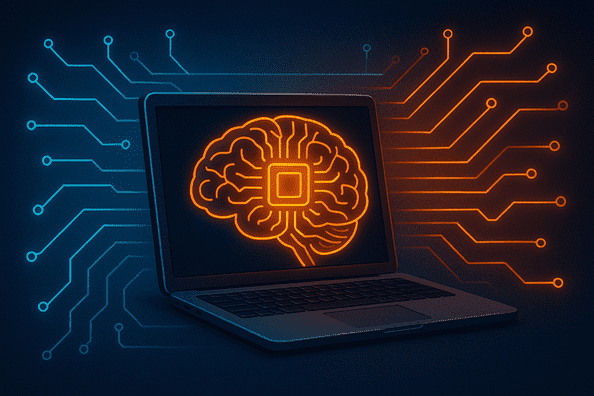In the shadowed valleys and rugged terrains of Jammu & Kashmir (J&K), a silent revolution is unfolding. Over the past decade, artificial intelligence (AI) has emerged as a cornerstone of India’s counter-terrorism strategy, transforming how security forces detect, prevent, and neutralize threats. From AI-powered facial recognition systems that unmask militants in crowded markets to predictive algorithms that forecast insurgent activities, these technologies are redefining the rules of engagement in one of the world’s most complex conflict zones. This report explores the multifaceted role of AI in J&K’s security landscape, examining its technological innovations, operational successes, and the ethical dilemmas it poses.
The Evolution of AI in Jammu & Kashmir’s Security Framework
From Reactive to Proactive Counter-Terrorism
For decades, counter-terrorism operations in J&K relied on human intelligence, manual surveillance, and reactive measures. However, the rise of hybrid warfare—marked by cross-border infiltrations, encrypted communications, and decentralized terror networks—demanded a paradigm shift. The Indian security establishment began integrating AI into its strategy in the early 2020s, leveraging its ability to process vast datasets, identify patterns, and predict threats in real time. The turning point came with the deployment of AI-based facial recognition systems in Kishtwar district in 2023.
These systems, equipped with high-resolution cameras and deep learning algorithms, could store up to 5,000 photographs of known terrorists, overground workers, and criminals. Even individuals wearing masks or disguises were identifiable, enabling security forces to track movements across checkpoints and crowded areas. According to SSP Khalil Poswal, this technology “significantly reduced the time required to identify anti-national elements, allowing for quicker apprehensions”.
AI-Driven Surveillance: Eyes on the Ground and Skies
Facial Recognition and Urban Monitoring
The Jammu & Kashmir Police’s AI surveillance network spans strategic locations, including national highways, marketplaces, and entry-exit points. These systems cross-reference live footage with centralized databases, flagging persons of interest instantaneously. In Ramban district, a tunnel on the Jammu-Srinagar National Highway became a testing ground for this technology in May 2024. The AI system detected three masked individuals linked to a banned organization, leading to their arrest within hours.
Autonomous Drones and Border Security
Along the Line of Control (LoC) and Line of Actual Control (LAC), the Indian Army has deployed 140 AI-based surveillance systems, integrating feeds from drones, radar, and motion sensors. The AGNI-D software, operational in eastern Ladakh since 2023, uses machine learning to classify targets—distinguishing between civilians, livestock, and potential infiltrators—with 92% accuracy. Meanwhile, Kamakzhi drones, introduced in August 2024, provide real-time situational awareness during counter-insurgency operations, reducing risks to soldiers in hostile terrain.
Predictive Analytics: Anticipating Threats Before They Materialize
Machine Learning and Pattern Recognition
The Global Terrorism Database (GTD) and Profiles of Incidents Involving CBRN by Non-State Actors (POICN) have been instrumental in training AI models to predict terrorist activities. In 2014, researchers at the University of Maryland demonstrated that neural networks could forecast attack patterns with 85% precision by analyzing historical data. This approach has since been refined by India’s Defense Research and Development Organization (DRDO), which uses geospatial analytics and social media monitoring to identify emerging hotspots in J&K.
The AI Data Bank Initiative
Launched in 2024, India’s first AI Data Bank aggregates real-time data from surveillance systems, intercepted communications, and public records. By applying natural language processing (NLP) to intercepted messages, the system flags coded language and threats, enabling preemptive strikes against terror cells. For instance, in October 2024, predictive analytics uncovered a plot to smuggle weapons via the Srinagar-Baramulla highway, leading to the seizure of 12 AK-47 rifles and the arrest of six overground workers.
Ethical Considerations: Balancing Security and Civil Liberties
Algorithmic Repression and Privacy Concerns
While AI enhances security, its misuse risks exacerbating human rights violations. Advocacy groups highlight cases of algorithmic bias in J&K, where innocent civilians have been misidentified as militants due to flawed training data. The lack of transparency in AI decision-making further complicates accountability. For example, the criteria for flagging “suspicious behavior” remain classified, raising concerns about arbitrary detentions.
The Global Debate on AI in Conflict Zones
International organizations have criticized the militarization of AI, urging frameworks to govern its ethical use. In J&K, where tensions between security forces and local communities persist, the proliferation of surveillance technologies risks deepening mistrust. A 2024 report by the Centre for Internet and Society (CIS) warned that “AI-driven repression could institutionalize discrimination against marginalized groups under the guise of counter-terrorism”.
Comparative Analysis of AI Tools in J&K’s Security Arsenal
| Technology | Function | Advantages | Limitations |
| Facial Recognition | Identifies suspects in real-time | Works with masks, integrates with existing CCTV | Privacy concerns, risk of false positives |
| AGNI-D Surveillance | Classifies border intrusions | High accuracy in rugged terrain | Limited coverage in dense forests |
| Kamakzhi Drones | Provides aerial reconnaissance | Reduces soldier exposure to danger | Vulnerable to electronic jamming |
| Predictive Analytics | Forecasts attack locations and methods | Enables preemptive operations | Relies on historical data, may miss new tactics |
The Road Ahead: Integrating AI with Human Expertise
Strengthening AI-Human Collaboration
AI is not a panacea. Its effectiveness hinges on synergy with human intelligence. The NIA’s 95% conviction rate in terror cases—a record high—reflects the successful integration of AI-derived evidence with traditional investigative methods. Training programs for security personnel, such as the AI center at the Military College of Telecommunication Engineering (MCTE), emphasize interpreting AI outputs critically.
Future Innovations on the Horizon
- Quantum Machine Learning: Accelerating data processing for real-time threat analysis.
- Ethical AI Frameworks: Developing guidelines to prevent misuse and ensure accountability.
- Cross-Border Collaboration: Sharing AI tools with allies like the U.S. through the Defense AI Dialogue.
Conclusion: A Double-Edged Sword in the Fight Against Terror
AI’s integration into J&K’s counter-terrorism strategy has undeniably enhanced operational efficiency, saving lives and disrupting networks that once operated with impunity. However, its unchecked application risks eroding civil liberties and perpetuating cycles of mistrust. As India positions itself as a global leader in defense AI, the challenge lies in harnessing its potential while safeguarding democratic values. The path forward must balance innovation with introspection—a lesson not just for J&K, but for conflict zones worldwide.



